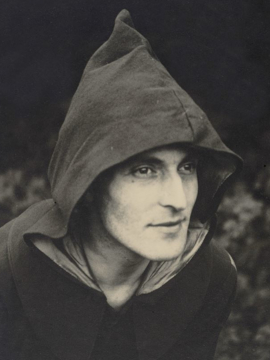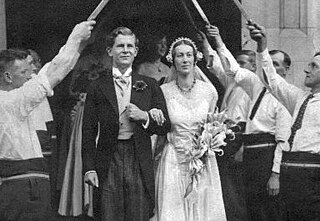
Ernest Thompson Seton was an English-born Canadian-American author, wildlife artist, founder of the Woodcraft Indians in 1902, and one of the founding pioneers of the Boy Scouts of America (BSA) in 1910.

Woodcraft Folk is a UK-based educational movement for children and young people. Founded in 1925 and grown by volunteers, it has been a registered charity since 1965 and a registered company limited by guarantee since 2012. The constitutional object of this youth organisation is "to educate and empower young people to be able to participate actively in society, improving their lives and others' through active citizenship."

The Kindred of the Kibbo Kift was a camping, hiking and handicraft group with ambitions to bring world peace. It was the first of three movements in England associated with the charismatic artist and writer John Hargrave (1894–1982). The Kindred was founded in 1920. Some members continued into Hargrave's Green Shirt Movement for Social Credit, which was established in 1931–32, and which became in 1935 the Social Credit Party of Great Britain and Northern Ireland. This was wound up in 1951.

The Social Credit Party of Great Britain and Northern Ireland was a political party in the United Kingdom. It grew out of the Kibbo Kift, which was established in 1920 as a more craft-based alternative for youth to the Boy Scouts.
Celtic Wicca is a modern form of Wicca that incorporates some elements of Celtic mythology. It employs the same basic theology, rituals and beliefs as most other forms of Wicca. Celtic Wiccans use the names of Celtic deities, mythological figures, and seasonal festivals within a Wiccan ritual structure and belief system, rather than a traditional or historically Celtic one.
Woodcraft League of America, originally called the Woodcraft Indians and League of Woodcraft Indians, is a youth program, established by Ernest Thompson Seton in 1901. Despite the name, the program was created for non-Indian children. At first the group was for boys only, but later it would also include girls. Seton instructed the children in his town in Connecticut in outdoor "Woodcraft" – knowledge and skills of life in the woods – and based much of the group's terminology and structure on the misconceptions about Native Americans that were common in that era. The program spread internationally to become the Woodcraft Movement and many of these programs still exist. Seton's Woodcraft scheme also had a strong influence on later youth programs and organizations, particularly, the Scout Movement.

John Gordon Hargrave, , was a prominent youth leader in Britain during the 1920s and 1930s, Head Man of the Kibbo Kift, described in his obituary as an 'author, cartoonist, inventor, lexicographer, artist and psychic healer'. He was a Utopian thinker, a believer in both science and magic, and a figure-head for the Social Credit movement in British politics.
Lone Scouts are members of the Scout movement who undertake scout activities on their own or by distance communication, usually because they live in isolated areas or otherwise do not participate in scout activities with other scouts. A Lone Scout May have an adult Scout leader or counselor who may instruct and supervise them. They can follow the same program as other Scouts and may advance in the same way as all other Scouts.

Mary Neal was an English social worker, suffragette and collector of English folk dances.

The Abbey Series of British novels by Elsie J. Oxenham comprises 38 titles which were published between 1914 and 1959. The first title, Girls of the Hamlet Club set the scene for the school aspects of the series, but it is the second title, The Abbey Girls, that introduces The Abbey – almost a character within the series in its own right – a romantic ruin that inspires love for it as a quiet, peaceful place, and creates the wish to behave in the public-spirited tradition of the early Cistercian monks. These qualities go some way towards explaining the popularity of the series.

Elsie Jeanette Dunkerley, was an English girls' story writer, who took the name Oxenham as her pseudonym when her first book, Goblin Island, was published in 1907. Her Abbey Series of 38 titles are her best-known and best-loved books. In her lifetime she had 87 titles published and another two have since been published by her niece, who discovered the manuscripts in the early 1990s. She is considered a major figure among girls' story writers of the first half of the twentieth century, being one of the 'Big Three' with Elinor Brent-Dyer and Dorita Fairlie Bruce. Angela Brazil is as well-known - perhaps more so - but did not write her books in series about the same group of characters or set in the same place or school, as did the Big Three.
Non-aligned Scouting organizations is a term used by the World Organization of the Scout Movement (WOSM), World Association of Girl Guides and Girl Scouts (WAGGGS) and their member national organizations to refer to Scouting organizations that are not affiliated with them. See List of non-aligned Scouting organizations.

Abbey Connectors are titles by Elsie J. Oxenham that connect into her main Abbey Series. They fall into several sub-series, listed here in best reading order, with the Abbey Titles they relate to shown in their place in the mini-series, but without publication details, which are on the main Abbey Series page:
The British Camp Fire Girls' Association was a youth organisation in the UK. It was founded in 1921 and was an offshoot of Camp Fire USA.
Leslie Allen Paul was an Anglo-Irish writer and founder of the Woodcraft Folk.
The Order of Woodcraft Chivalry is a scouting-like movement operating in the United Kingdom, which was founded in 1916 by Ernest Westlake. It was inspired by Ernest Thompson Seton's Woodcraft Indians, and Seton was its honorary Grand Chieftain. Whilst largely being contemporary to Baden-Powell's Scouting movement, it differed from it in that it does not have the perceived military overtones of Scouting, instead focusing on the virtues of kindness, fellowship and woodcraft. The Order was small compared to Scouts, having only 1,200 members by 1926. By the 1950s it had ceased to have a major public presence. It still exists (2016) as a semi-formal network of personal friends with historic family links to the original formal organisation, with little interest in publicity and few surviving overt connections with the Woodcraft Folk or the Forest School Camps.

Henry Rolf Gardiner was an English rural revivalist, helping to bring back folk dance styles including Morris dancing and sword dancing. He founded groups significant in the British history of organic farming. He sympathised with Nazism and participated in inter-war far right politics. He organised summer camps with music, dance and community aims across class and cultures. His forestry methods were far ahead of their time and he was a founder member of The Soil Association.
Joyce Reason was a British author of missionary biographies and historical fiction for young readers.
There are many national organisations in the United Kingdom that have been established to provide services to people under the age of 18.










